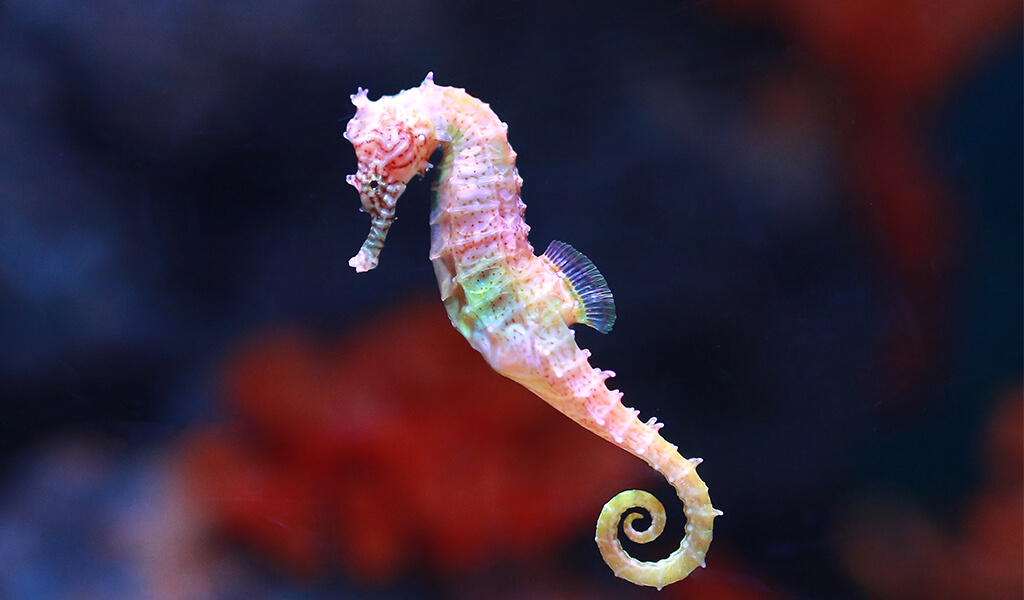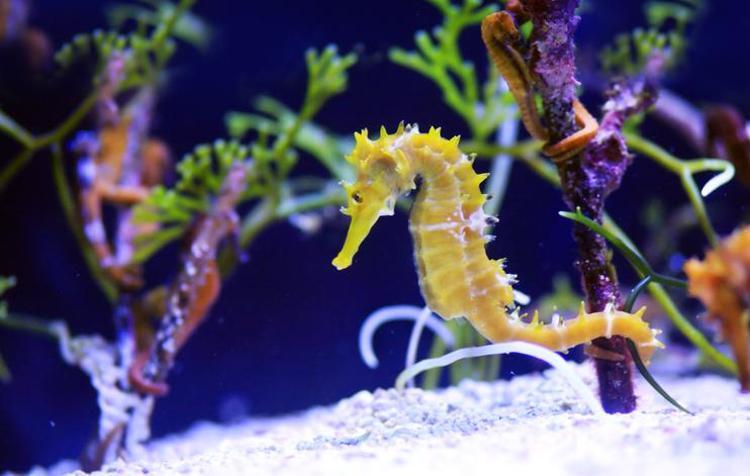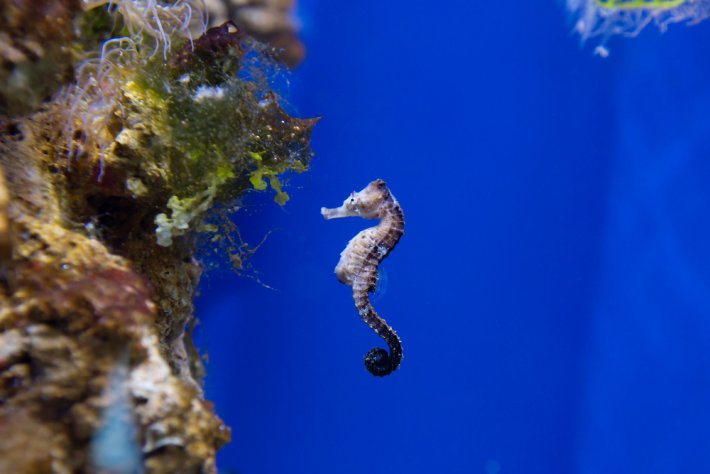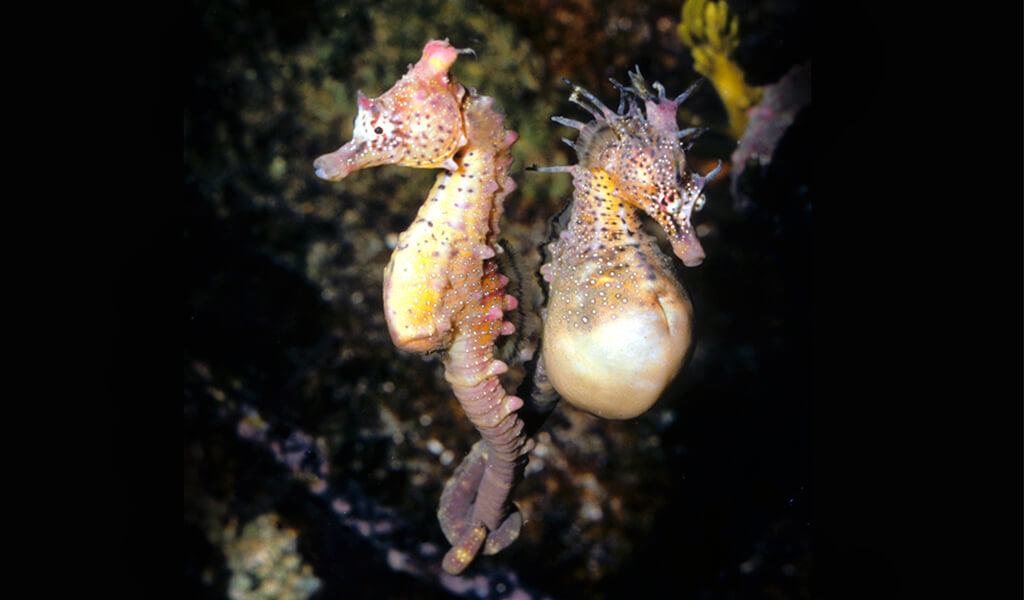"Seahorses in Peril: Navigating the Conservation Challenges of These Ocean Wonders"
Seahorses: Graceful Speedsters of the Oceans
Seahorses are small and graceful marine creatures that inhabit the mysterious world of the oceans. Belonging to the Hippocampus genus, these beings are known for their vibrant colors and intricate patterns. Seahorses can be found in various marine environments, ranging from calm waters to swifter currents.
One distinctive feature of seahorses is their long, straight tube-like mouth at the front of their heads. This structure aids them in capturing prey more effectively. Additionally, their eyes can move independently, allowing them to explore their surroundings more efficiently.
These fascinating marine creatures often hide among seaweed, corals, and other underwater plants. Their colorful and spiky structures help them protect themselves from dangers and perfectly blend into their environment.
Seahorses are also known for their unique reproductive process. Females deposit eggs onto the males' backs, and male seahorses assume the role of carrying and hatching the eggs. This unique reproductive behavior sets seahorses apart from other marine creatures.
Unfortunately, seahorses face threats such as ocean pollution, climate change, and overfishing. Therefore, focusing on environmentally friendly practices and sustainable fishing methods is crucial for the conservation of seahorses and marine life in general.
In conclusion, seahorses are fascinating and elegant beings that play a significant role in the diverse ecosystems of the oceans. Their conservation is critical for maintaining the balance of the oceans and preserving these beautiful creatures for future generations.
The Conservation Challenges Facing Seahorses in our Oceans
- Seahorses, with their enchanting appearance and unique behaviors, are captivating denizens of the ocean. However, these fascinating creatures are currently facing numerous challenges that threaten their survival. In this article, we'll explore the conservation issues affecting seahorses and the importance of taking action to protect these marine wonders.

- One of the primary threats to seahorses is habitat loss. Deteriorating coastal environments, often caused by human activities such as coastal development and pollution, result in the destruction of the seahorses' natural habitats. As these coastal areas degrade, seahorses lose their shelter and breeding grounds, making them more vulnerable to predators and environmental changes.

- Pollution, particularly plastic pollution, poses a significant danger to seahorses. These small marine animals can easily become entangled in discarded fishing gear and ingest microplastics, leading to health issues and potentially fatal consequences. Addressing plastic pollution through awareness campaigns, recycling initiatives, and reducing single-use plastic can contribute to the well-being of seahorses and the entire marine ecosystem.

- Climate change is another pressing concern. Rising sea temperatures and ocean acidification impact the delicate balance of marine life, including the habitats where seahorses thrive. Climate-related changes can disrupt their reproductive cycles and food sources, leading to a decline in seahorse populations. Mitigating climate change through global efforts to reduce carbon emissions is crucial for the long-term survival of seahorses.
- Overexploitation through the aquarium trade and traditional medicine markets is a significant threat to seahorse populations. Many seahorse species are exploited for their unique appearance and perceived medicinal properties. Implementing and enforcing regulations on the trade of seahorses, along with promoting sustainable alternatives, is vital to curb their overharvesting.
- Conservation efforts for seahorses should also involve local communities. Educating coastal communities about the importance of seahorses in maintaining a healthy marine ecosystem can foster a sense of stewardship. Supporting sustainable livelihoods, such as eco-tourism initiatives that emphasize responsible wildlife viewing, can provide alternative income sources for communities dependent on marine resources.

- In conclusion, the conservation of seahorses requires a multi-faceted approach that addresses habitat protection, pollution reduction, climate change mitigation, and responsible trade practices. By raising awareness and fostering collaboration on a global scale, we can work towards ensuring the survival of these enchanting creatures and preserving the biodiversity of our oceans for future generations.
- VİDEO LİNK: https://www.youtube.com/watch?v=HRg_jufnxp4
- VİDEO LİNK: https://www.youtube.com/watch?v=Q414VsNA0sE
- VİDEO LİNK: https://www.youtube.com/watch?v=CV_hI4kwQ5o








































